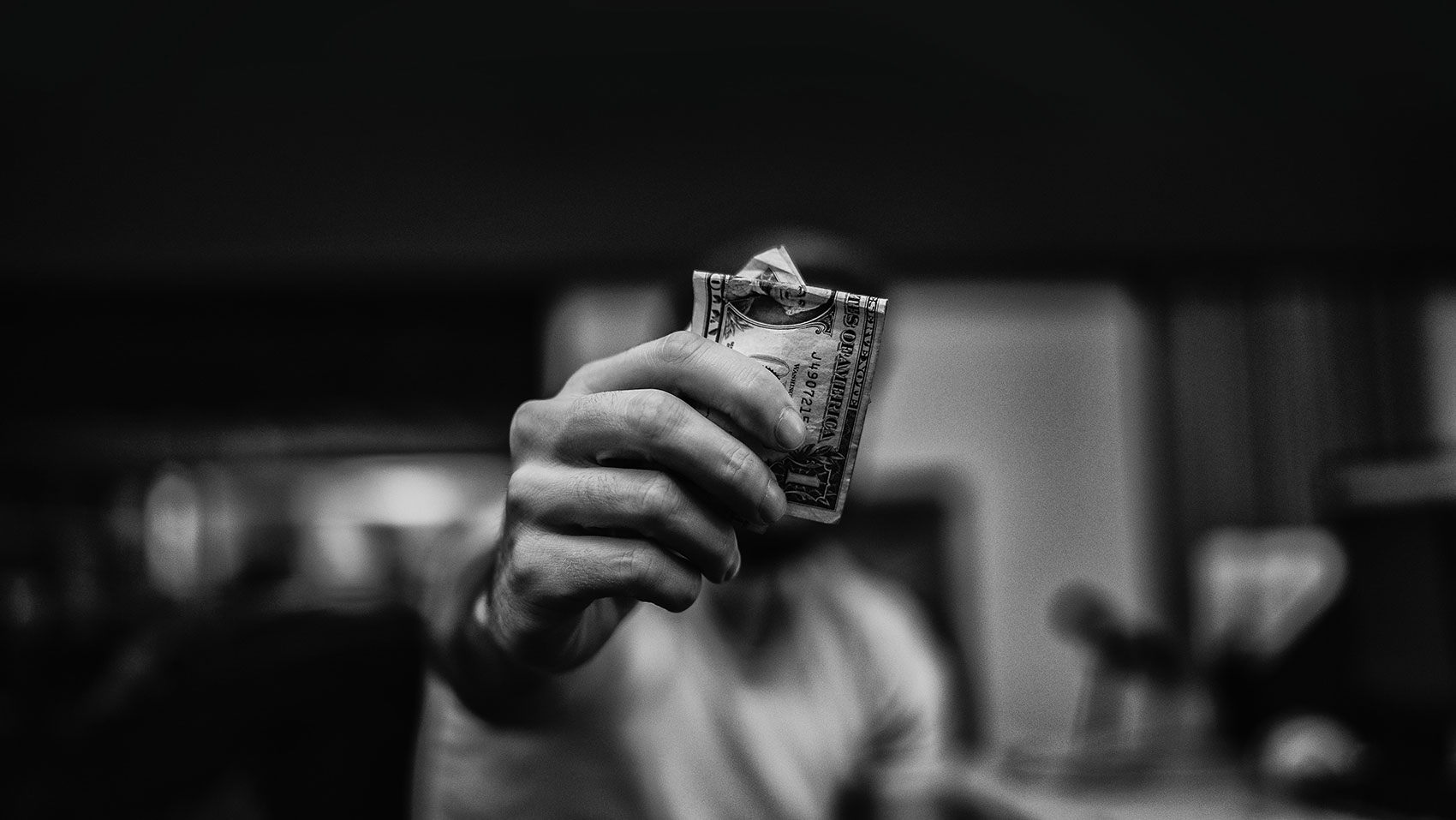Has The Toronto Bubble Finally, Popped?

We at Fox Marin have always understood the importance of long-term thinking. Over the years, we have been very bullish on the long-term prospects of the Toronto real estate market, and our clients have benefited as a result. As the fog from the ravages of the global pandemic subsides and our economy begins to reopen fully, it is becoming blatantly apparent that the case for investing in and owning Toronto real estate has never been stronger – or, in some regards, more critical. With the onset of COVID-19, the world shut down most of its economic activity for some time. The subsequent actions by the U.S. Fed and the Bank of Canada will have a significant impact on our economies and the lives of Canadians going forward. The following explores the possible repercussions for us as Canadians and their relation to how we should view Toronto real estate.
In 2008, U.S. banks froze due to a liquidity crisis, which nearly took down the entire global financial system. As a result, the U.S. government acted for the sole purpose of bailing out the banks to get them liquid and lending again. The U.S. government purchased troubled assets from the banks and injected $800 billion into the banking system so that banks could continue operating. At the time, that seemed like an insane amount of money, resulting in coordinated protests in the streets across the world under the Occupy Wall Street movement. This paled in comparison to more than $5 trillion in COVID-19-related U.S. stimulus and infrastructure packages in 2020/2021, with more funds projected to come. Unlike in 2008, these funds are being injected directly into the economy through direct cheques and other government programs. As a result, the case for inflation today is much stronger than it was back in 2008.
The direct monetary injection of stimulus during the COVID-19 pandemic may have thrown a life raft out to many who are living paycheque to paycheque in the short term, but one may ask at what cost? From the long-term macro perspective, the massive amounts of printing by the Bank of Canada and the U.S. Federal Reserve have propped up certain asset classes, and in turn, made the wealthy even wealthier. Canada’s top 20 billionaires only got wealthier during the COVID-19 pandemic, gaining an average of $2 billion each. At the same time, millions of Canadians lost their jobs and struggled with the economic consequences of the pandemic, according to a report from the Canadian Centre for Policy Alternatives.
Over time, as inflation and the debasement of the U.S. and Canadian dollars takes effect at an accelerated rate due to printing, the bottom half of households who don’t own assets will see their financial position further erode. The wealth inequality in first-world economies will continue to grow as more and more individuals and households get left behind.
In 1971, under much economic pressure, the U.S. elected to go off the gold standard and detach the USD from gold. This action provided the U.S. government with the ability to print as much money as it wanted without being correlated to anything, essentially granting itself the power to conjure cash out of thin air.
Over time, the U.S. has become reliant on printing money to stimulate and prop up its economy, and the numbers keep getting more and more astronomical relative to GDP. Some might go so far as to speculate that the U.S. government has become addicted to printing money, and the merry-go-round keeps going faster and faster, making it harder and harder to get off. Nothing in life is for free, and everything has a cost; one of the costs of printing money is that it leads to tremendous financial and social inequality. All you have to do is look at the increasing gap between wages and living costs over the last 50 years to understand. Eventually, this level of mass printing can lead to real inflation or even hyperinflation. One needs to look no further than countries like Argentina, Zimbabwe, or Lebanon as a case study of where, if left unchecked, can all lead to.
A recent article in Forbes by Bryan Riches notes, “The White House and Congress continue to plan and roll out fixcal extravagance (unabashedly growing the debt). And the Fed continues to inflate the nominal price of everything and inflate away the value of debt. We know a multitrillion-dollar infrastructure spend is coming. That will only further inflate the nominal growth of the economy and further tighten the labour market.
He (Biden) called today for an extension of “child tax credits” through 2025. This means a family earning around the median income will end up paying no federal income tax. And it’s not really a credit. It’s a direct payment. It’s cash. And it’s not really a “tax” credit, as those who do not pay taxes receive and will continue to receive direct payments. Bottom line, the direct payment “stimulus” has been masked as COVID relief but has always been a strategic play to ram through universal income. This will continue to push wages higher, creating labour shortages and inflation.”
The situation is not much different here in Canada; in April, at the Liberal Party Policy Convention, the resolution supporting universal basic income (UBI) was unanimously passed. The resolution stated, “Given the success of the CERB program, a UBI will assist seniors, and low-income Canadians maintain an adequate standard of living, regardless of working status.”
In the U.S., the Consumer Price Index (CPI) climbed 5.0% over the last 12 months. That is the largest bump since the 5.4% increase in August 2008. U.S. Treasury Secretary Janet Yellen claims that the current uptick in CPI and inflation is “transitory,” and if it starts to get out of control, then they have the means to deal with it (meaning they can raise interest rates). But do they?
Typically, when inflation rises, governments can raise interest rates to cool off the economy; however, raising interest rates will pressure state, provincial and federal governments to pay down their debt while putting debt-ridden U.S. citizens and Canadians in a similar position. If they raise interest rates too fast, it will overshoot the economy; the result would be a recession. If we start to run into mass inflation, given the debt levels of governments and banks and their addiction to printing money in a low-interest-rate environment, it will present a challenge as to how to deal with it without overcorrecting and causing another potentially even greater recession.
Economists will argue back and forth about how inflation should be calculated and an accurate measure of inflation. However, it is irrefutable that the U.S. and Canada are dramatically increasing their money supply at unprecedented rates. In 2020 alone, the U.S. has created 22% of all the U.S. dollars issued since the nation’s birth, and Canada is not too far behind. According to USDebtClock.org, the national debt will approach $89 trillion by 2029. This would put the country’s debt-to-GDP ratio at 277%, surpassing Japan’s current 272% debt-to-GDP ratio. Canada is not in much of a better position relative to its population. If Canada has the U.S. could not conjure money out of thin air, they would be solvent.
In a thought-provoking article on Medium.com, entrepreneur Bret Munster writes, “While the U.S. has yet to experience hyperinflation if you think being the world’s largest economy or the world’s reserve currency protects the dollar from being devalued, think again. According to The Fed’s Consumer Price Index, $1 in 1913 (the year The Federal Reserve was established) would buy you roughly what would require $26.15 in 2020. That is a cumulative loss of a little over 96% in purchasing power from the most dependable fiat currency in the world during that period. Ironically, an original stack of Monopoly game money from 1935 is worth roughly $40-$60 on eBay today as a collectible item, meaning “Monopoly Monday” has held its value better than real money over the last 85 years.” Since the pandemic, the rate of devaluation of Canadian and U.S. dollars has accelerated to breakneck speeds with no signs of slowing down.

Before the pandemic, Canada and the U.S. were adding on average 7-8% to the monetary supply annually; since the pandemic, that rate has risen over three times to well over 20% per annum. This presents a real problem to both companies and individuals because money is being debased at a rate of somewhere around 20% per year. Legendary hedge fund investor Ray Dialo recently proclaimed that “Cash is Trash,” and he could not be more right.
This dynamic will serve only to cause greater economic inequality. Those who “are savers” or own fixed-income assets will be penalized, and the financial bottom half of society that lives paycheque to paycheque will begin to fall further behind as their buying power, even with government subsidies, starts to erode over time. Those with the least amount of economic buffer room will feel it the most, while the wealthy that own real assets will continue to capitalize on the growth of their portfolios. Think about how there were over 20 million unemployed Americans during COVID-19 while the stock market reached an all-time high as a metaphor for things to come.
While our currencies are being debased, our buying power will be equal to the increasing monetary supply. Whether you are a doctor making $500,000 a year or a bus driver making $85,000, your pay rate is currently being devalued at around 20%, meaning you are earning 20% less or having to work 20% harder to break even. This will expedite a massive shift in wealth, rewarding those who hold (and can hold) scarce hard assets while punishing savers and those who live paycheck to paycheck.
In a recent interview Raoul Pal, CEO and Co-Founder, Real Vision and Global and Macro investor, summed up the situation as follows; We had the most significant economical event we will ever live through. What happened is that the outcome (financial Armageddon) was hidden or alleviated by the massive printing of money. What happened is that the central banks printed, as a percentage increase of money somewhere in the neighbourhood of a 50% increase in the amount of money available. They depreciated your savings by that amount, and the price of assets exploded. As so it becomes even more challenging for us to own in the stock market or housing. So the financial Armageddon has happened to everybody, but nobody sees it. You have been robbed of your ability to save for the future.
We are in the middle of the biggest financial crisis in history. We can’t see it because we are looking the wrong way. It’s the value of money itself, not the value of the dollar, which people tend to confuse, it’s not inflation, the price of food going up; it’s the value of money devaluing so you have a lower standard of living than you did in the past and the only way you can make it up is through debt.
Stanley Druckenmiller is widely considered one of the greatest investors of all time. Major tectonic shifts are about to happen. In a recent CNBC interview, Druckenmiller stated, “I can’t find any period in history where monetary and fiscal policy were this out of step with the economic circumstances, not one… If we’re going to monetize our debt and we’re going to enable more and more of this spending, that’s why I’m worried now for the first time that within 15 years, we lose reserve currency status.”
Whether it’s rampant inflation or currency debasement, there will be a cost to this spiralling spending, debt, and monetary manipulation. Is this end of days as we know it? Not likely, but there will be long-term repercussions for what is happening today. One of the best ways to protect yourself is to own bricks-and-mortar real estate in highly desirable areas. Shelter is at the basis of Maslow’s hierarchy of human needs. Whether inflation or currency debasement is on your mind, desirable residential real estate is a hard, scarce asset (in desirable locations) that will protect you as a hedge against both inflation and currency debasement.
Real estate has traditionally proved to be an excellent hedge against inflationary periods. A recent Wall Street Journal article notes that Stanford University economist Monika Piazzesi studio U.S. inflation of the 1970s and “found that home prices rose relative to the size of the economy, while stock prices fell, meaning homeowners became richer compared with stock owners.” If inflation sticks around today, “the same thing will play out,” Ms. Piazzesi said. The article states that most economists agree that residential and commercial real estate owners are often better off during times of rapid inflation than owners of stocks or bonds. During inflationary periods, if the cost of everything rises relative to the dollar’s strength, hard assets like real estate also go up in value as inflation increases. If you can lock in a property at a fixed low-interest rate, then your cost will remain fixed as your property’s value takes off while simultaneously preserving your capital.
Wall Street Firms Are Buying Up Single-Family Homes All Across The U.S. BlackRock is the world’s largest asset manager with just over $9 trillion in assets under management. It currently owns more than 17,000 homes across the U.S. Other firms like JPMorgan Chase and Brookfield Asset Management are investing billions into acquiring single-family homes across the U.S. These Wall Street firms understand the value of owning residential real estate in this economic climate and are re-allocating resources as a result. A recent article in Inman News states that consumers, when looking to buy a home, are increasingly competing against institutional investors in the U.S. Can you imagine one day competing in a bidding war for a house against BlackRock? That scenario is very possible in the U.S. and may make its way to Canada eventually.
Over the last few decades, the growth of the Toronto real estate market has been explosive, running in tandem with solid immigration. Before COVID-19, when a client would ask what the most significant risk to Toronto real estate is, the answer would always be the same: a sudden halt in immigration. But how could that ever be possible? Then COVID-19 happened, presenting the nightmare scenario by causing immigration and foreign investment to come to a dead stop. The tap was closed, and 18 months later, lo and behold, record resale prices were reached in low rise and condominiums across the entire Greater Toronto Area (GTA). Partially spurred on by low interest rates, domestic demand outstripped supply throughout the first half of 2021. What does this mean for the future?
Suppose you think the Canadian values of universal health care, political stability, multiculturalism, and a social safety net had high socioeconomic capital in 2019. How much will that value have increased by 2022 and beyond for people living abroad? It is fair to anticipate that immigration and foreign investment in Toronto will make past years look anemic. In tandem, the liberal government has raised its immigration numbers by targeting 1.2 million new immigrants over the next three years. Toronto is the most multi-cultural city globally, and Canada’s economic centre typically welcomes 50% of all immigrants to the GTA. This means that the GTA population could increase by up to 600,000 people over the next three years. If you think we have inventory or affordability issues today, what will the next three years look like after the immigration tap is fully reopened?
In 2021, building costs for residential homes are surging. A recent report by Stats Canada states that residential construction costs are up 7.22% in just the latest quarter! This segment has been led by single-detached houses that have seen a whopping 9.0% price increase to build. Overall costs to construct residential real estate have increased over 15.05% year over year. Over the last decade, the GTA has averaged the creation of new supply on average 36,000-38,000 units annually. In the face of increasing demand and immigration, strong GDP growth, low borrowing costs, combined with massive inflation on the cost to build, the question will not be will prices continue to rise, but by how much?
A report by the Bank of Canada projects that there is $125 billion currently sitting in house savings account over the pandemic, and the business is holding more than $130 billion in cash. For reference, Canada’s entire economy is $1.8 trillion. A significant portion of these saving and accumulated cash will be looking for a safe harbour in the face of the coming period of inflation and currency debasement. In this type of environment, parking money in Toronto real estate as a store of value for capital preservation/appreciation will be where a significant portion of the “smart money” will end up.


The impact of inflation will be highly individualistic, dependent upon one’s circumstances and future life aspirations. For example, will inflation impact someone living in their parent’s basement watching Netflix all day? Probably not. However, should that person ever aspire to move out one day and own their own home, then its effects will have a major impact, perhaps relegating them to being renters for the rest of their lives. To a couple that loves to live well, travel and have discretionary spending, the parents looking to pass down generational wealth to their kids, or the bus driver just struggling to keep up, the long-term impact could be devastating.
The strategy to counterbalance what is happening is straightforward: you can no longer save yourself into wealth, and therefore, you must invest your hard-earned money in hard, scarce assets in high demand. Over the last decade, the GTA new housing supply remains consistently anemic, which has been far outstripped by demand from immigration (soon to be 200,000 annually) and domestically during COVID-19, even while under lockdown. Toronto has an incredible track record behind it, and it has shown tremendous resilience in the face of global economic turmoil. You will be hard-pressed to find a better store of value with more excellent utility than what Toronto real estate provides. While Toronto real estate is expensive, compared to most major cities, it is still a relative bargain. The real question is, what is the cost to your future self and family by not owning and continuing to invest in Toronto real estate?
Putting your head in the sand and ignoring what is going on will not make it go away; it’s in effect only going to make you poorer. Like the fable of the frog in the pot where the water gets increasingly warm until it begins to boil, by the time those who do nothing are forced to act, it will be too late. As with any challenge, it’s essential to understand its significance and then take steps to get out and get ahead of the inflation tsunami to come. We are not talking about the zombie apocalypse or Mad Max’s end-of-days future, but it is imperative to recognize that the winds of change are blowing and that many will get left behind with no chance of coming back.

—
This article is written by Ralph Fox, Broker of Record and Managing Partner here at Fox Marin Associates. Ralph is a Torontonian native who recognized from an early age that the most successful people in life apply long-term thinking to their investments, relationships, and life goals. It’s this philosophy, along with his lifelong entrepreneurial drive and exceptional business instincts that help to establish Ralph as a top agent in the real estate market in downtown Toronto.